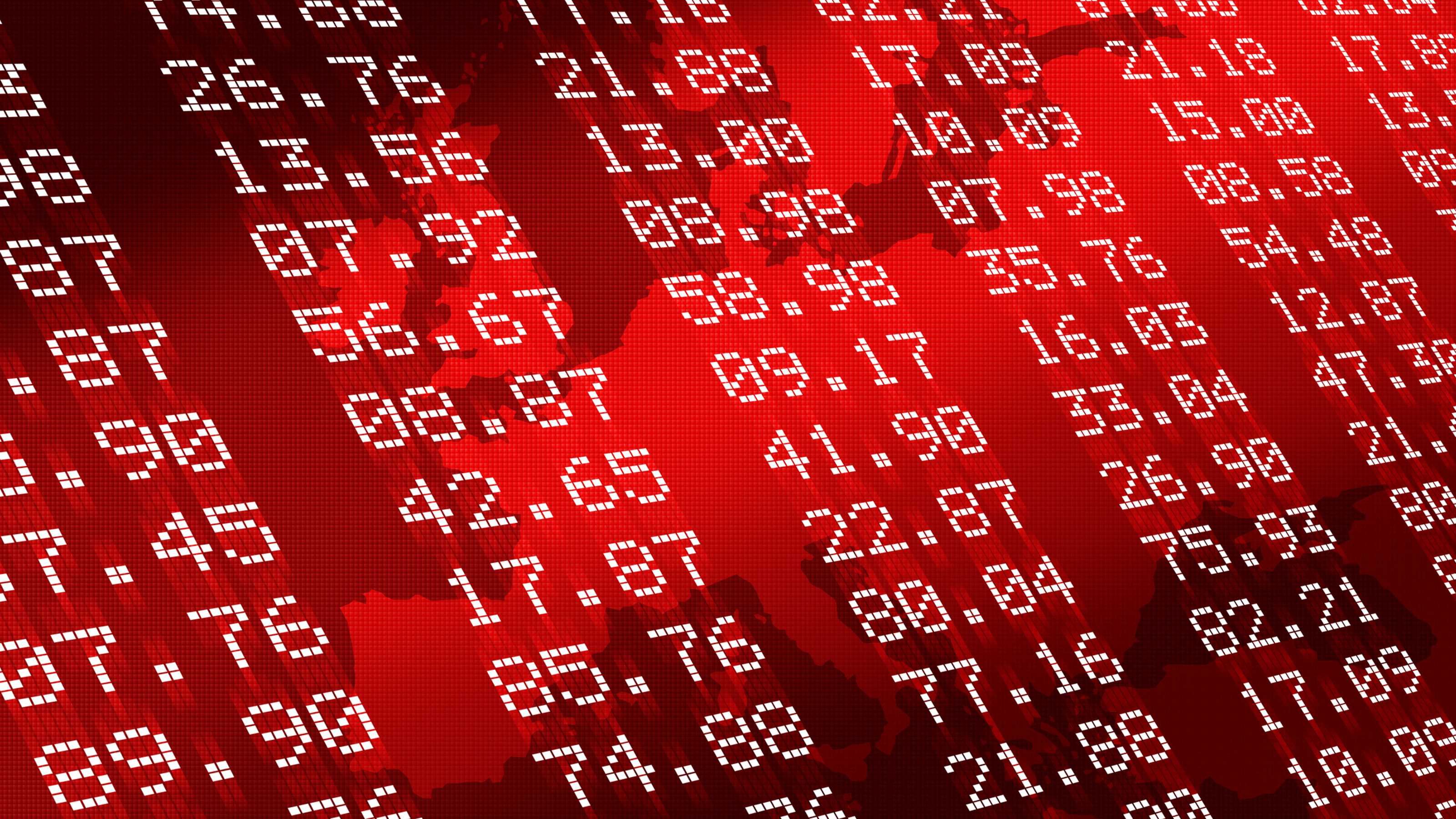Stock Market Today: Stocks Fall on Higher GDP, Ugly Outlooks
Markets tumbled on dour earnings and a GDP revision that gives the Fed more room to hike rates.


Good news was bad news for stocks on Thursday. An upward revision to third-quarter gross domestic product (GDP) revealed a surprisingly resilient U.S. economy.
The market recoiled from this pleasant surprise, however, believing it could give the Federal Reserve more room to raise interest rates. Some dour corporate reports also weighed on shares.
Starting with the economic data, the Bureau of Economic Analysis' third estimate of Q3 GDP showed that the U.S. economy was in better shape over the July to September period than previously thought. Real GDP, which is adjusted for inflation, increased at an annual rate of 3.2% in the third quarter, up from a prior estimate of 2.9%. The Q3 data also mark a sharp reversal from the second quarter, in which real GDP contracted 0.6%.

Sign up for Kiplinger’s Free E-Newsletters
Profit and prosper with the best of expert advice on investing, taxes, retirement, personal finance and more - straight to your e-mail.
Profit and prosper with the best of expert advice - straight to your e-mail.
The Fed, however, is looking to cool down the economy in order to stamp out the worst inflation in four decades. Any data that tends to be supportive of higher interest rates for longer is something the market does not want to see.
"Given that almost 60% of GDP is derived from services revenue, it should not come to a huge surprise that GDP continues to beat on the upside," says David Wagner, portfolio manager at Aptus Capital Advisors. "This doesn't make the Fed's job any easier, as it continues to show the strength of the consumer in the face of higher inflation."
Some downbeat corporate news also hurt the major benchmarks on Thursday. Micron Technology (MU, -3.4%), the largest U.S. manufacturer of memory chips, announced a range of cost-cutting measures amid the worst glut in a decade for semiconductor firms. The chipmaker said it will lay off 10% of its workforce, as current-quarter revenue is forecast to decline by more than management or analysts had forecast. Micron also projected a wider-than-expected loss in the current quarter.
Adding to the market's stress, shares in CarMax (KMX, -3.7%) fell after the auto dealer missed Wall Street's already pessimistic third-quarter revenue and profit forecasts.
At the closing bell, the blue-chip Dow Jones Industrial Average fell 1.1% to finish at 33,027, while the broader S&P 500 declined 1.4% to 3,822. The tech-heavy Nasdaq Composite tumbled 2.2% to close at 10,476.
December, which is historically the second-best month of the year for stocks, has been a huge disappointment in 2022. Since 1928, the S&P 500 has delivered an average price gain in December of 1.4%, per Yardeni Research. This year, the index is off 6.3% for the month-to-date.
Thankfully, traders have a powerful historical trend starting tomorrow, and it might just help salvage some folks' returns.
The Santa Claus Rally, which officially kicks off Friday, is upon us.
For the uninitiated, the Santa Claus Rally covers the final five trading days of the year and the first two trading days of the new year. Few periods can beat the SCR for performance, notes Ryan Detrick, chief market strategist at Carson Group.
"No seven-day combo is more likely to be higher (up 79.2% of the time), and only two combos have a better average return for the S&P 500 than the 1.33% average return during the official Santa Claus Rally period," Detrick says.
Although the Santa Claus Rally might help traders and tacticians add a little window dressing to their 2022 and early 2023 returns, most investors are generally better served by maintaining longer horizons.
Time to Look Towards 2023
As we turn the page on an annus horribilis for equities, it's time to get back to basics.
Investors rebalancing their portfolios for 2023 shouldn't forget that the best blue-chip dividend stocks – and especially the best Dow dividend stocks – never go out of style. It's also critical that investors embrace diversification. Exchange-traded funds (ETFs) – from the best high-yield ETFs to the best bear-market ETFs – will do this automatically for you.
And for folks who like to pick their own stocks, start by scouring everything from the best small-cap stocks to the best growth stocks to the Dogs of the Dow for 2023 for a wealth of potentially market-beating ideas.
Get Kiplinger Today newsletter — free
Profit and prosper with the best of Kiplinger's advice on investing, taxes, retirement, personal finance and much more. Delivered daily. Enter your email in the box and click Sign Me Up.

Dan Burrows is Kiplinger's senior investing writer, having joined the publication full time in 2016.
A long-time financial journalist, Dan is a veteran of MarketWatch, CBS MoneyWatch, SmartMoney, InvestorPlace, DailyFinance and other tier 1 national publications. He has written for The Wall Street Journal, Bloomberg and Consumer Reports and his stories have appeared in the New York Daily News, the San Jose Mercury News and Investor's Business Daily, among many other outlets. As a senior writer at AOL's DailyFinance, Dan reported market news from the floor of the New York Stock Exchange.
Once upon a time – before his days as a financial reporter and assistant financial editor at legendary fashion trade paper Women's Wear Daily – Dan worked for Spy magazine, scribbled away at Time Inc. and contributed to Maxim magazine back when lad mags were a thing. He's also written for Esquire magazine's Dubious Achievements Awards.
In his current role at Kiplinger, Dan writes about markets and macroeconomics.
Dan holds a bachelor's degree from Oberlin College and a master's degree from Columbia University.
Disclosure: Dan does not trade individual stocks or securities. He is eternally long the U.S equity market, primarily through tax-advantaged accounts.
-
 Trader Joe’s Expansion 2025: Full List of New Store Locations
Trader Joe’s Expansion 2025: Full List of New Store LocationsTrader Joe’s is opening 21 new stores in 2025 across 13 states and Washington, D.C. See if a location is coming to your city and what makes this beloved grocer stand out.
By Paige Cerulli
-
 Despite Economic Uncertainty, Americans Remain Confident About Retirement, Survey Shows
Despite Economic Uncertainty, Americans Remain Confident About Retirement, Survey ShowsSaving and spending is a concern but most workers and retirees think they are on track based on a new survey.
By Donna Fuscaldo
-
 Stock Market Today: Trump Retreats, Markets Rejoice
Stock Market Today: Trump Retreats, Markets RejoiceStocks rally, yields soften, the dollar rises, and even beaten-down names enjoy the wages of potential trade peace.
By David Dittman
-
 Stock Market Today: Stocks Soar on China Trade Talk Hopes
Stock Market Today: Stocks Soar on China Trade Talk HopesTreasury Secretary Bessent said current U.S.-China trade relations are unsustainable and signaled hopes for negotiations.
By Karee Venema
-
 Stock Market Today: Dow Drops 971 Points as Powell Pressure Ramps Up
Stock Market Today: Dow Drops 971 Points as Powell Pressure Ramps UpPresident Trump is increasing his attacks against Jerome Powell, insisting the Fed chair cut interest rates.
By Karee Venema
-
 Stock Market Today: No 'Powell Put'? No Problem
Stock Market Today: No 'Powell Put'? No ProblemInvestors, traders and speculators look beyond both another Trump post and more signs of slowing economic activity.
By David Dittman
-
 What Is the Buffett Indicator?
What Is the Buffett Indicator?"It is better to be roughly right than precisely wrong," writes Carveth Read in "Logic: Deductive and Inductive." That's the premise of the Buffett Indicator.
By Charles Lewis Sizemore, CFA
-
 Stock Market Today: Dow Drops 699 Points After Powell Speech
Stock Market Today: Dow Drops 699 Points After Powell SpeechFed Chair Powell warned of a slowing economy and higher inflation but said the central bank isn't ready to cut rates just yet.
By Karee Venema
-
 Stock Market Today: Stocks Struggle Amid Tariff Uncertainty
Stock Market Today: Stocks Struggle Amid Tariff UncertaintyBoeing dropped after China suspended new aircraft orders, while Bank of America and Citi climbed on earnings beats.
By Karee Venema
-
 Stock Market Today: Stocks Gain on Tech, Auto Tariff Talk
Stock Market Today: Stocks Gain on Tech, Auto Tariff TalkThe Trump administration said late Friday that it will temporarily halt tariffs on some Chinese tech imports.
By Karee Venema